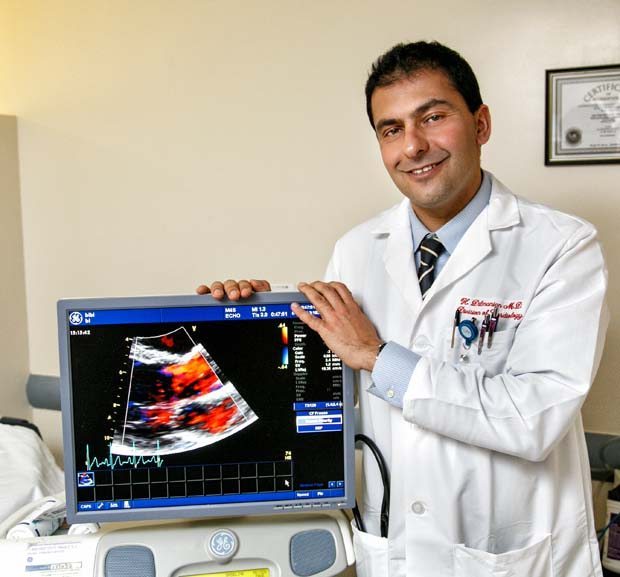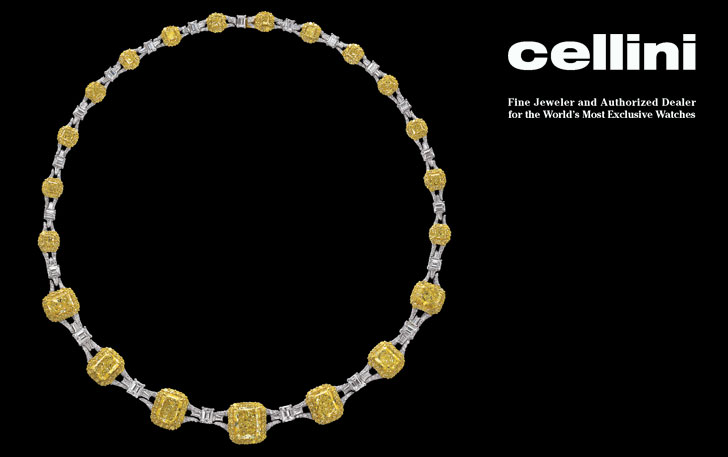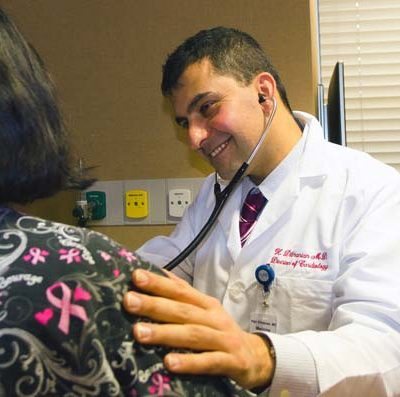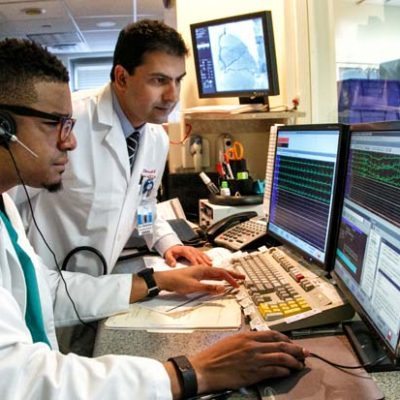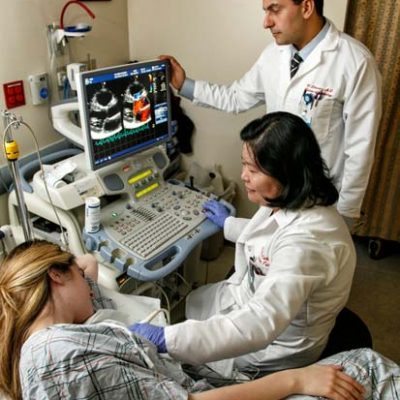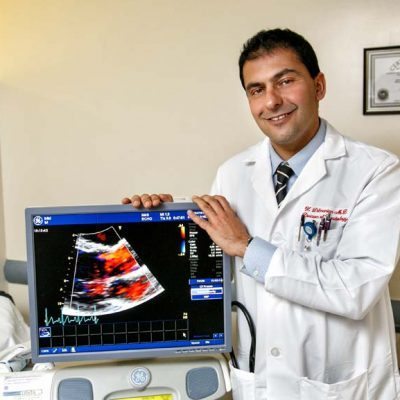
The director of Echocardiography services at New York Methodist Hospital details the stunning advances in heart care in recent years, and how community outreach in Brooklyn is more pivotal to his profession than ever
by Megan Schade • photos by AMESSE PHOTOGRAPHY
While it is Hajir Dilmanian, M.D.’s scientific side that makes him good at medicine, it’s his social side that makes him a great cardiologist. During his residency at a major Manhattan medical center, the Queens native saw how many people from every walk of life struggle with heart disease and knew he could make a difference.
“Heart disease is so prevalent, but with new advances in the field, it doesn’t need to be a terminal condition,” he said. “To me, one of the most important elements of cardiology is building a rapport with your patients. Building the framework for open communication is crucial, because cardiology is so much more than diagnosis and treatment—it is about helping people see where they can make healthy changes, supporting them as they build new habits, and monitoring their health over time.”
After completing a fellowship in cardiology, Dr. Dilmanian joined the faculty of New York Methodist Hospital in the Division of Cardiology as an attending physician. Today he is director of echocardiography services.
“I was drawn to New York Methodist Hospital because of the sophistication of the cardiac services, specifically the New York Methodist-Cornell Heart Center, which is one of only a few cardiac surgery centers in Brooklyn,” he explained. “I was also impressed by the diagnostic tools used in the Division. Not many hospitals have such a range of capabilities—cardiac stress tests, cardiac MRI, computed tomography (CT) angiogram, and nuclear studies, in addition to a huge echocardiography lab. NYM also has an advanced cardiac catheterization suite, which beyond diagnostic use, is the setting for stenting, radio-frequency ablation and trans aortic valve replacement.”
One thing Dr. Dilmanian loves about being a cardiologist is that his daily activities are varied. “I may spend the morning monitoring a patient in the cardiothoracic intensive care unit who is recovering from open-heart surgery, or performing a test in an offsite medical office or counseling a patient on the cardiac benefits of aerobic exercise,” he said. “But as director of echocardiography services, I also spend a lot of time in the hospital’s echocardiography lab.
”Echocardiograms (or “echoes”) are often the first test performed to assess a cardiac condition. Unlike X-rays, echoes don’t involve radiation, and they are, for the most part, non-invasive. “Perhaps the most common echo procedure we perform is transthoracic echocardiography,” Dr. Dilmanian said. For that procedure, a device sends ultrasound waves through the chest wall to the heart. As the waves bounce off the structures of the heart, a computer in the echo machine converts them into pictures on a screen. This test is used to detect abnormal heart valve function, poor pumping function, and to identify blood clots within the heart chambers or tumors in the heart.
Some problems, such as coronary heart disease, are easier to diagnose when the heart is working hard and beating fast. Stress echocardiography is done as part of a stress test. During that test, the patient exercises to make the heart work hard and beat fast. Pictures are taken of the heart using echocardiography before and after exercise so they can be compared.
If a doctor needs to get a detailed look beyond what a standard echo can provide, he or she may recommend trans esophageal echocardiography (TEE). This test involves placing a long, flexible ultrasonic device into the esophagus, which lies directly behind the heart. TEE is particularly helpful to see signs of clots or tumors inside the chambers of the heart, and to see the severity of any valve defects.
“Advances in non-invasive imaging have allowed more and more patients access to a broader selection of diagnostic tools than has ever before been available,” explained John Heitner, M.D., director of non-invasive imaging at NYM. “With his commitment to his patients and his mastery of ultrasound technology, Dr. Dilmanian is a tremendous asset to the Division here and to the community he serves.”
What Dr. Dilmanian feels is also unique about the Division of Cardiology at NYM is its commitment to outreach.
“Brooklyn is a huge borough; it’s densely populated and sometimes difficult to get around, so we go to our patients. I am part of a team of cardiologists— including Joshua Socolow, M.D., Igor Mamkin, M.D., Sarah Qu, M.D., and Maureen Wang, M.D.—that travels to Hospital satellite clinics and physician offices in neighborhoods throughout the borough. We then come together at the Hospital and, as a group, review all of the data and discuss the next step in treatment.”
Patients might come to see a cardiologist like Dr. Dilmanian because they have been feeling dizzy or experiencing shortness of breath, or because they have been referred by their internist for monitoring due to high blood pressure or high total cholesterol. “Each treatment plan is as unique as the patient—for some, I might explain the perils of their continued smoking and try to help them stop, or I might prescribe a medicine to help lower cholesterol. I might schedule others for a placement of a stent or pacemaker, or refer them to a cardiothoracic surgeon to discuss valve replacement.”
“Dr. Dilmanian is an advocate for his patients and a key member of the cardiology team,” added Terrence Sac chi, chief of the Division of Cardiology. “He demonstrates sincere concern for the welfare of his patients and embodies the Division’s philosophy of providing the highest level of care in the most accessible ways possible.”
New York Methodist Hospital
506 Sixth Street / 718.780.3000
nym.org


